TECH TUESDAY: Why the technical battleground was white-hot in Austin

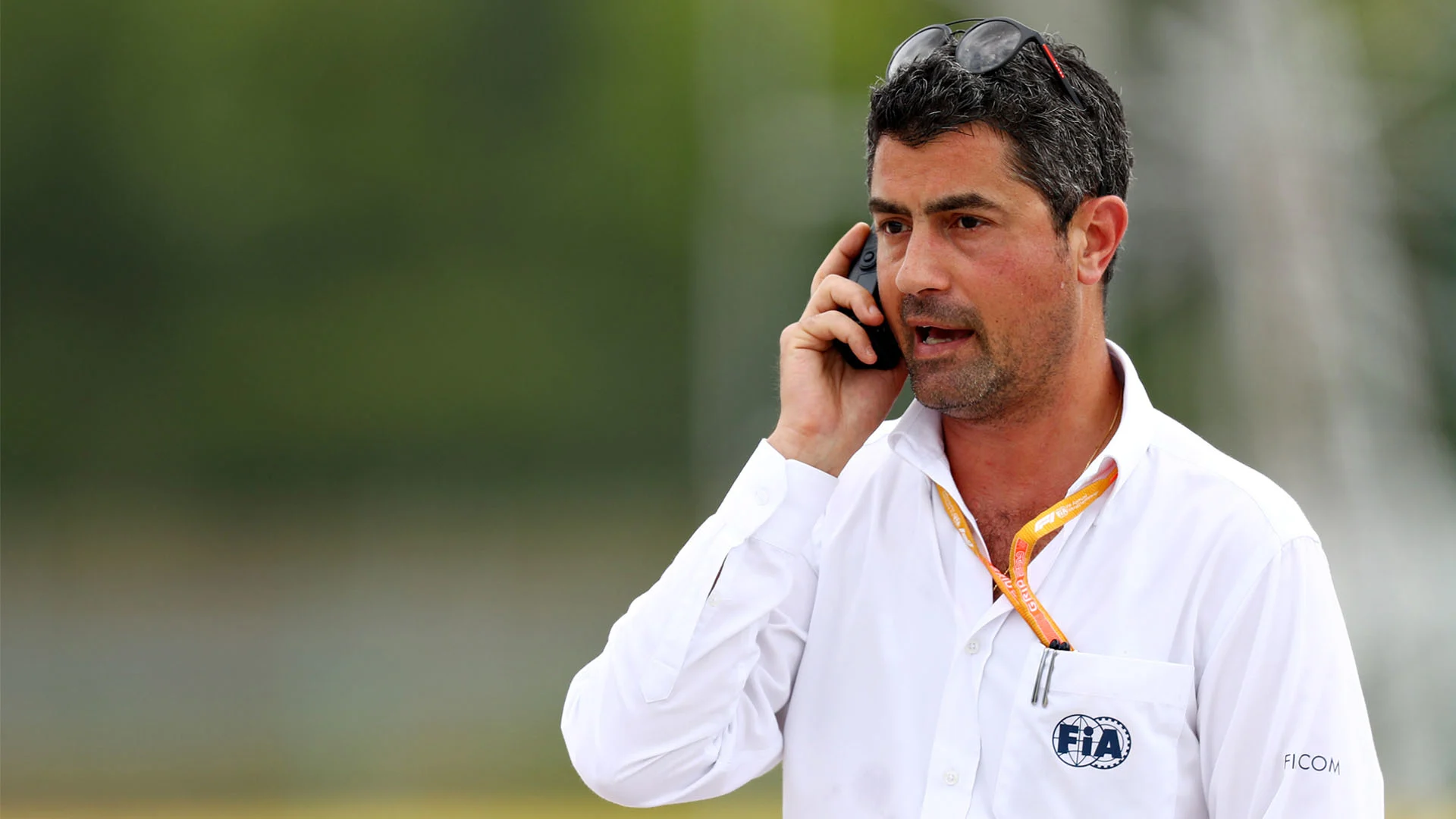
A Technical Directive issued by the FIA on the Saturday of the United States Grand Prix weekend sent ripples through the F1 paddock. But just what are Technical Directives, and what prompts their being issued by the sport’s governing body? Mark Hughes, aided by the technical drawings of Giorgio Piola, digs deeper…
Although the drivers’ championship was finally settled at last weekend’s United States Grand Prix, there were still a few technical scores to settle between the teams.
In the white-hot competitive environment, teams are always looking for loopholes in the regulations if there is a lap time advantage there to be had. If a team believes they see a way around the wording, they may clear it with the FIA first, or they may just press ahead. If permission is sought, the FIA will either clear it (with that team only) or refuse it, in which case it will issue a Technical Directive to all teams informing them of the query and the reasons it has refused.
READ MORE: How the top teams are juggling 2019, 2020 and 2021 car development
If a rival team is suspicious of another, they can either protest the car during a race weekend – or they can ask the FIA for permission to use whatever interpretation it believes its rival is using. The governing body can either inform them that this is a valid interpretation or disagree, in which case a Technical Directive will follow.
Red Bull posited using a pulsing electrical signal to interfere with the fuel flow meter
An FIA Technical Directive went out on Saturday morning in Austin in response to a query Red Bull made regarding whether it would be legal to use pulsing electrical signals to interfere with the FIA fuel flow device.
Red Bull posited using a pulsing electrical signal to interfere with the fuel flow meter, so that in between the 2,000Hz frequency measuring points, the nominal fuel flow limit could momentarily (and repeatedly) be exceeded (like momentarily doing 80mph in a 70mph limit but still staying within a 70mph average as measured between two points).
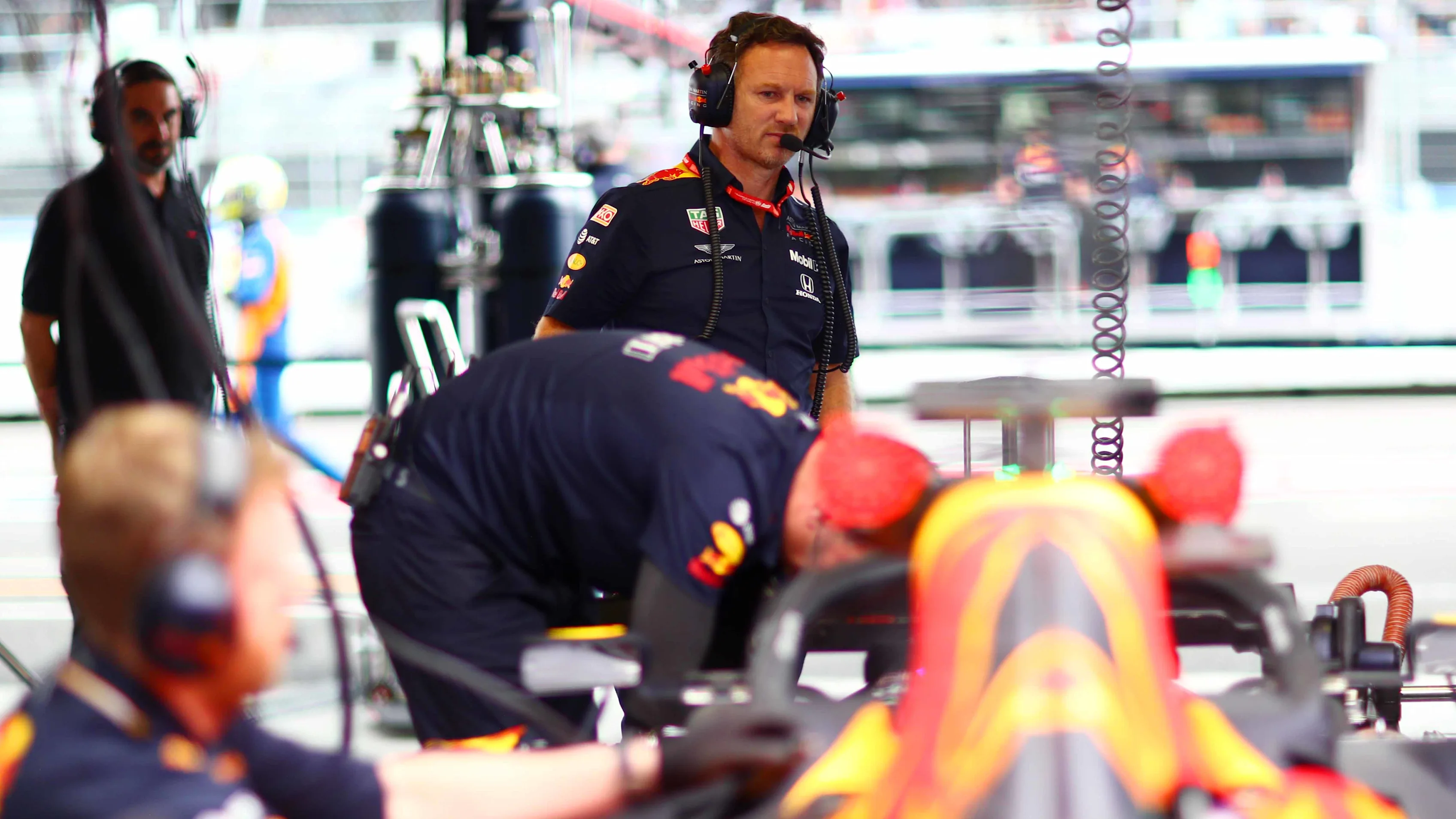
In this way, the fuel flow would not be exceeded as measured between the two moments the FIA fuel flow meter measured – but it could exceed that flow in between. The engine could potentially deliver more power with an initially higher fuel flow, even if it averaged the same. Such a system would confer a definite advantage. But the FIA ruled it out, citing the following two regulations:
5.10.3 All cars must be fitted with a single fuel flow sensor, wholly within the fuel tank, which has been manufactured by the FIA designated supplier to a specification determined by the FIA. This sensor may only be used as specified by the FIA. Furthermore, all fuel delivered to the power unit must pass through this homologated sensor, and must all be delivered to the combustion chambers by the fuel injectors described by article 5.10.2.
5.10.5 Any device, system or procedure the purpose and/or effect of which is to increase the flow rate or to store and recycle fuel after the measurement point is prohibited.
READ MORE: F1’s revolutionary 2021 rulebook – The thinking behind the changes
Previous to that, Ferrari are believed to have queried a feature on the rear brake duct and suspension of the Mercedes. The technical regulations define an area inboard of the rear wheel which can be used for the brake duct. The Mercedes duct (in carbon fibre attached to, and inboard of, the carbon fibre drum that surrounds the brake disc) fits into that stipulated area.
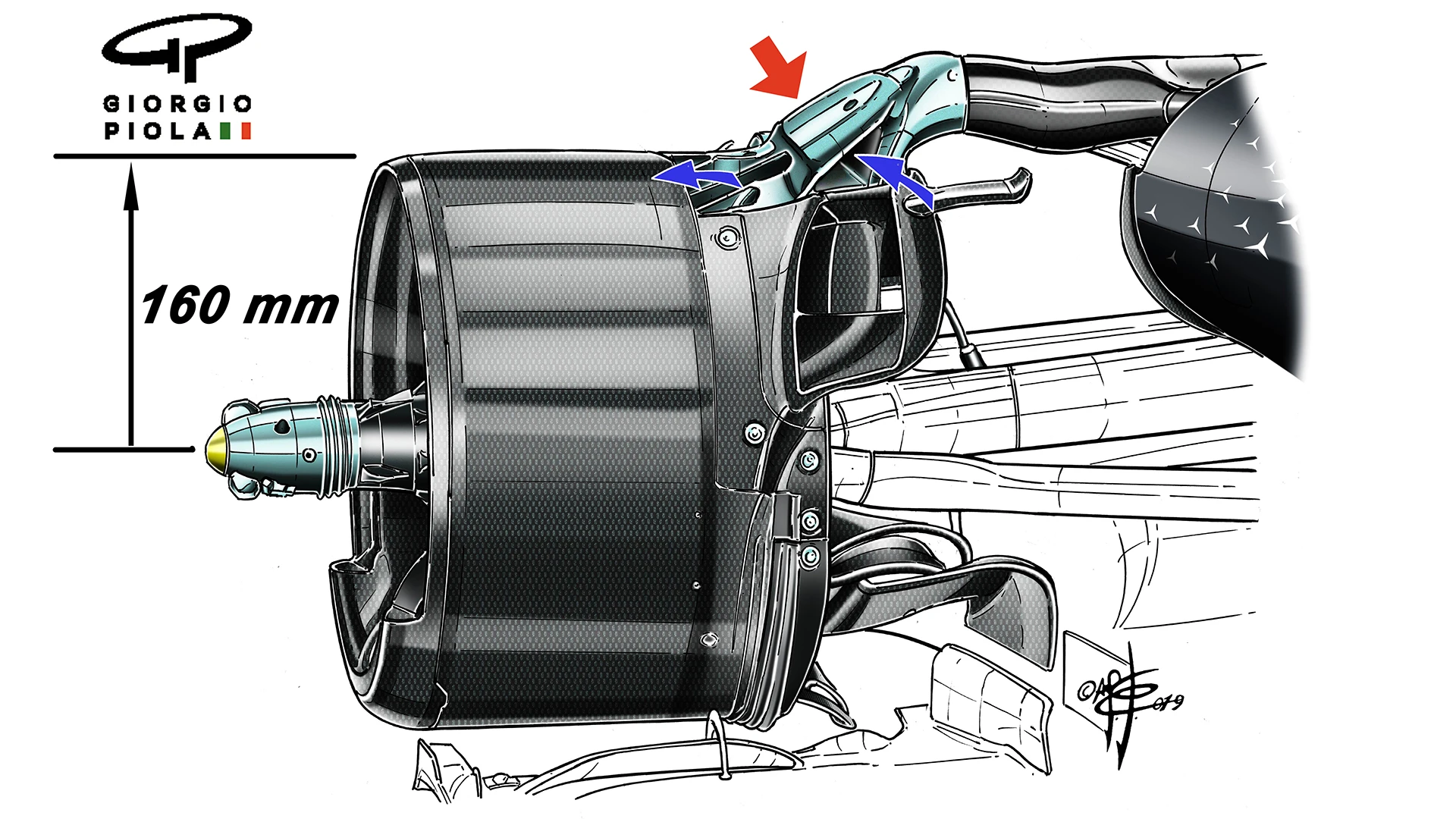
But there is a further inlet above (in metal, and arrowed in red above) within the hub extension to which the upper wishbone is mounted. A triangular inlet within that component aligns itself directly above the brake duct inlet and is outside of that stipulated area in the regulations.
As can be seen from the blue arrows however, this inlet does not lead to the brake disc but instead funnels air between the carbon fibre drum and the wheel rim. This will give greater cooling to the wheelrim and therefore allow better control of the rear tyre temperatures.
This has been passed as in compliance with the regulations – and so we can expect to see other teams configure similar arrangements.
Next Up
Related Articles
.webp) End Of Year Reports 2025Kick Sauber’s best and worst moments from 2025
End Of Year Reports 2025Kick Sauber’s best and worst moments from 2025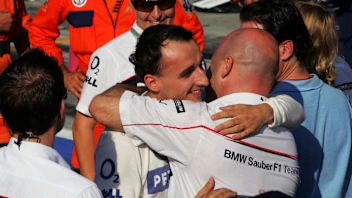 Sauber’s best moments and most memorable liveries in F1
Sauber’s best moments and most memorable liveries in F1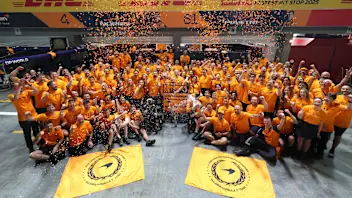 PalmerJolyon Palmer picks his top performers in 2025
PalmerJolyon Palmer picks his top performers in 2025/TEAM%20PREVIEWSHALF%20TERM%20REPORTS%20DISPLAY%20V1%20(13).webp) End Of Year Reports 2025Racing Bulls’ best and worst moments from 2025
End Of Year Reports 2025Racing Bulls’ best and worst moments from 2025 Albon names moment he's most proud of from 2025
Albon names moment he's most proud of from 2025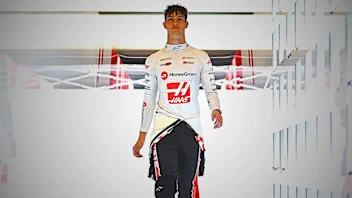 ExclusiveHow Bearman went from super-sub to star rookie in 2025
ExclusiveHow Bearman went from super-sub to star rookie in 2025